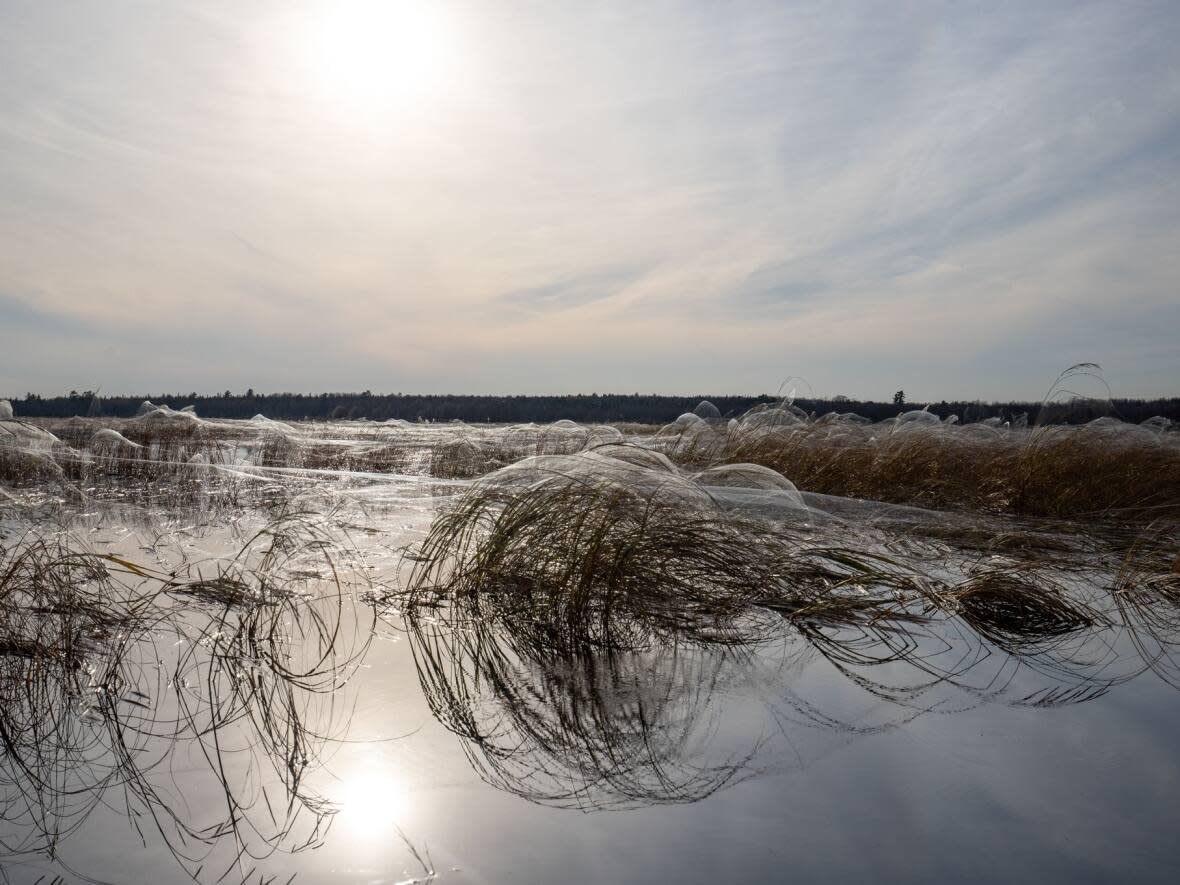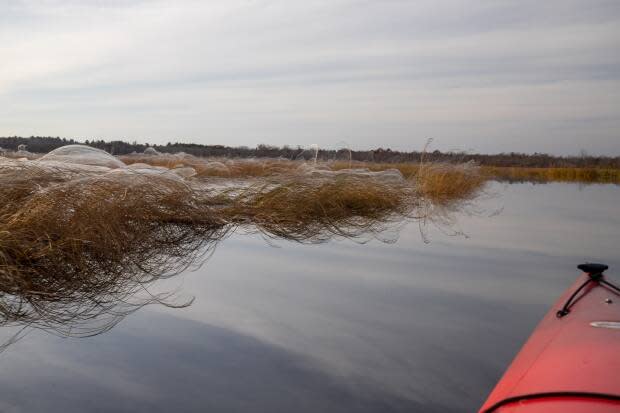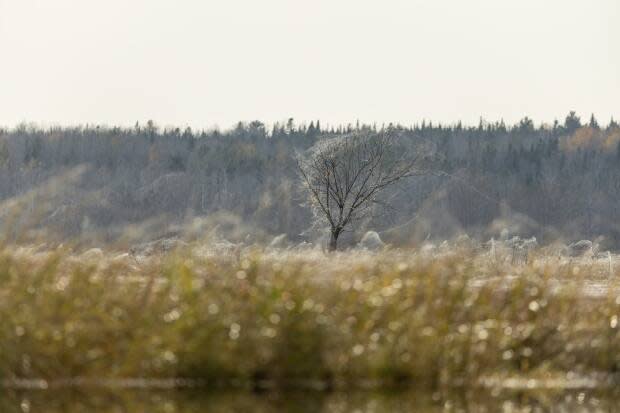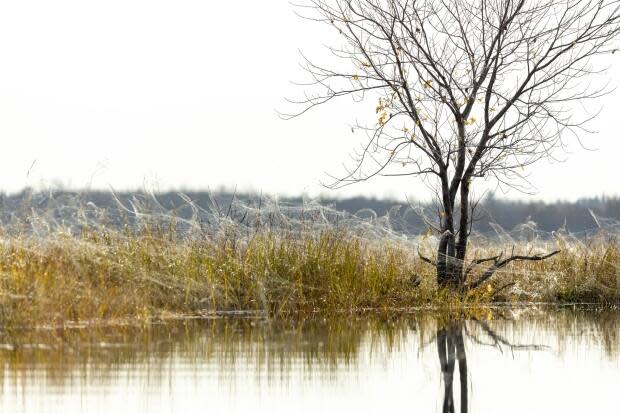Kayakers stumble across 'land of the spiders' on Sunpoke Lake

Unreality washed over him as his kayak slid over the mirror-still water.
The tall grass was bowed, held down by thick webs of spider silk. The leafless trees were adorned with it, trailing fishing-line-thick threads.
James Donald kept thinking, "It would get better, it would get better, it would get better," as he and his wife Vickie paddled down the river.
"But it didn't get better, it got worse," said Donald, who thought they were was just going for a relaxing Sunday afternoon kayak on Sunpoke Lake.

They felt transported to another world where spiders ruled. Some scurried on the water toward their kayak and tried to climb in. Others floated on balloons made of silk or walked on tightrope threads strung between two trees.
"When you're in the middle of it, and everything's covered in spider webs, it felt like you're in some kind of weird horror movie," he said.
In fact, the spiders were just doing their spider thing.
They're called dock spiders, or fishermen spiders, and they build these nests to protect their hatchlings.
They are native to North America, said Ilesha Ileperuma Arachchi, University of New Brunswick PhD student who did her master's degree in spider taxonomy. In autumn, they find a safe place with lots of wetlands and vegetation to nest. For days, they spin domes under which they can lay their eggs.
That matches up with what Donald saw.
"When you get close, you could see like baby spiders in the webs," he said.
Arachchi said these web formations are typical, and the expanse of almost a square kilometre just means the spiders thought this is a good place to be. It likely feels unusual to see this, she said, because the spiders nest in areas where humans rarely go.

She said ideally, if anyone finds themselves in this predicament, they're better off just turning back and avoiding disturbing the spiders any more than they have to.
"It's a natural habitat," she said. "It's their home."
It didn't happen all at once
The couple started their trip at the Oromocto River near a steel single-lane bridge by French Lake, about 30 kilometres southeast of Fredericton.
They parked their car, put their kayaks in and started paddling. It started off with a few spiders here and there, but before they knew it they were running through sticky webs and brushing the spiders away.
They thought about turning back but knew more spiders will be behind them and hoped there would be fewer as they paddled up Sunpoke Creek and into Sunpoke Lake. But the webs only got thicker.
Donald said he was fascinated and wanted to record videos and capture how the setting sun reflected off of the webs.
"If I was by myself, I would have been there for hours and hours, probably trying to figure out what was going on," he said.

His wife, on the other hand, wanted to get out of there, and he didn't blame her.
At one point, one spider fell inside her kayak and she almost flipped over, which would not have been safe or pleasant considering the chilly waters this time of year.
They completed the loop safely after three hours of paddling, just as the sun was setting. As they pulled the kayaks up onto the river shore, they noticed something odd.
They walked closer, and realized what was happening.
"You could see spider webs on the car."


